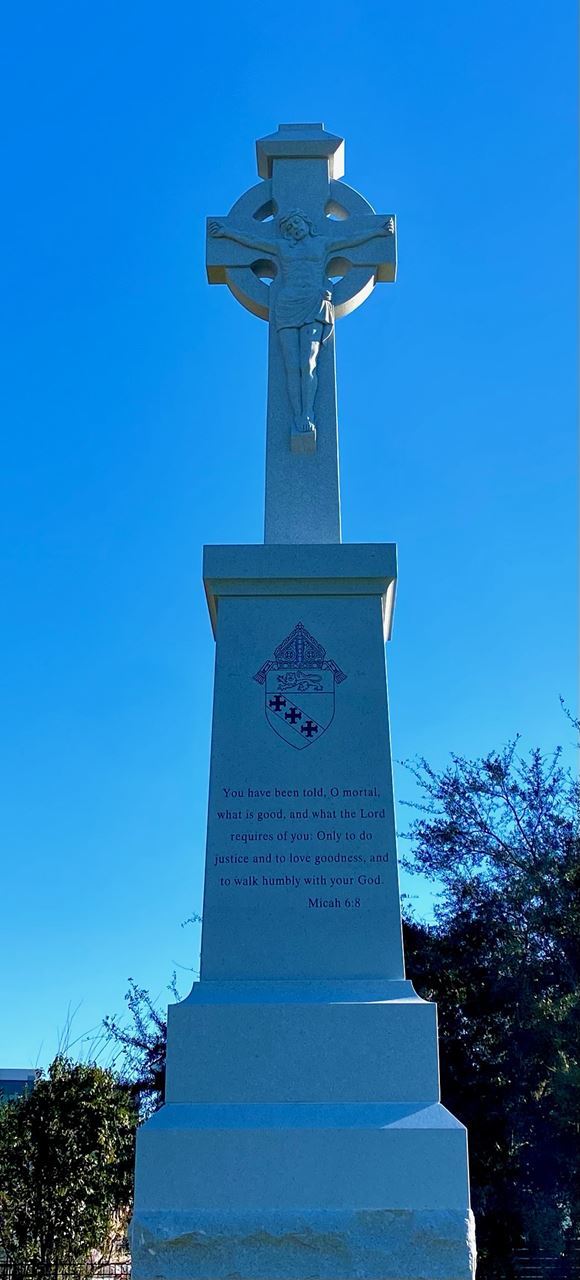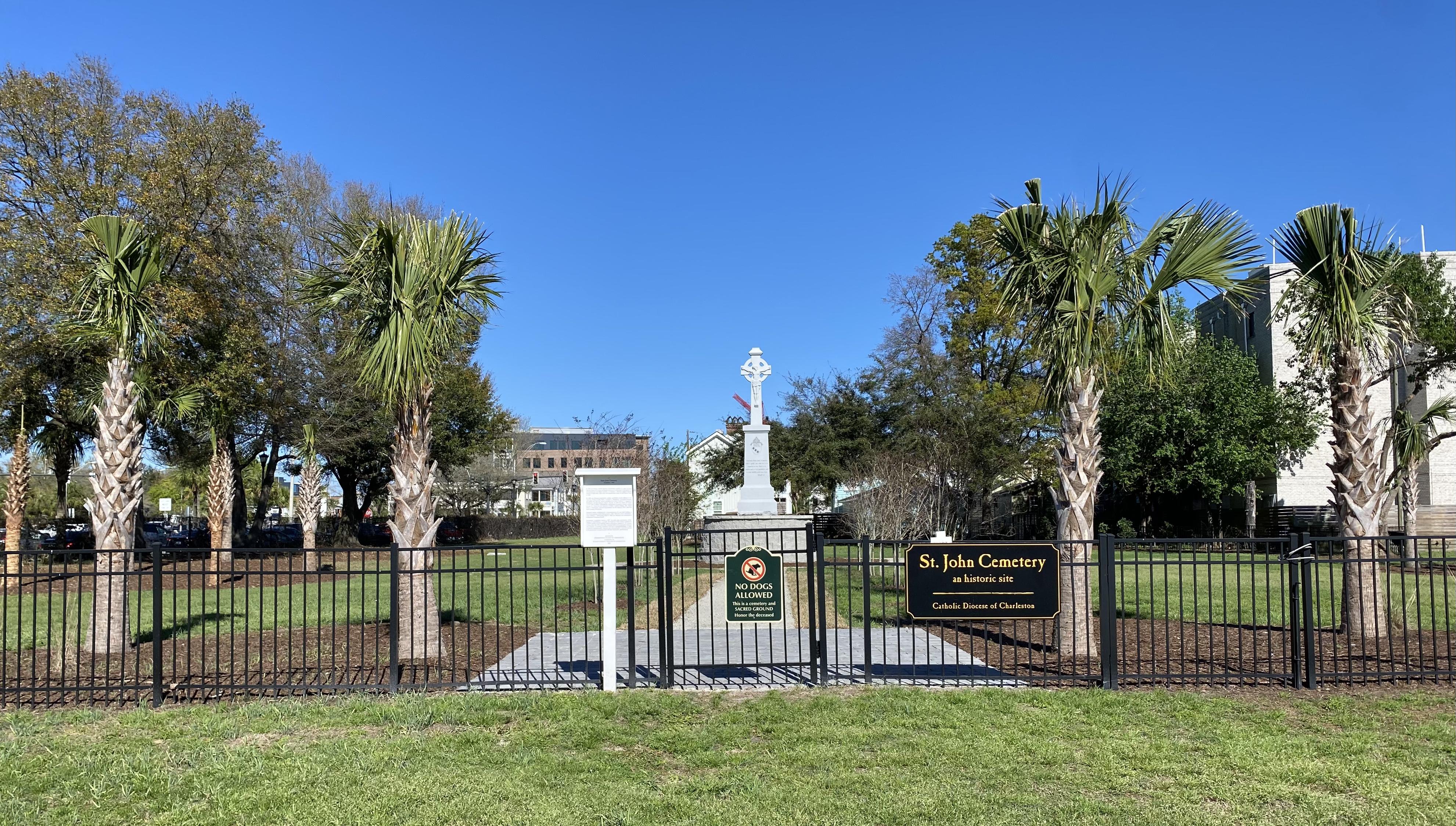Carolina Catholic Professionals Special Projects
Ms. Rosa's Kitchen (2023)
Matthew 25:45 Amen, I say to you, what you did not do for one of these least ones, you did not do for me.
The floor in Ms. Rosa’s kitchen was buckling and becoming increasingly unstable for her to walk on, even with a cane. Carolina Catholic Professionals organized a project to rebuild the floor and upgrade the small kitchen in Ms. Rosa’s home. The cost of materials and appliances was roughly $8,000.
Ms. Rosa was born in 1926 in rural Berkeley County, South Carolina. As an African-American growing up during Jim Crow in the rural south, Ms. Rosa sought the relative better opportunities available in the greater Charleston community. For many years she worked as a housekeeper although she was poorly, sometimes unfairly, compensated without recourse. Over time she was able to obtain a job at the Naval exchange on the U.S. Navy base in North Charleston. She retired after 37 years of service.
Ms. Rosa lives in the Union Heights Neighborhood of North Charleston and is an active member of New Bethel Reformed Episcopal Church, where she has worshipped for nearly 70 years. Ms. Rosa is the matriarch for her community. Her small home has become a community center. She sells candy, chips, and soft drinks to the neighborhood children since there are no stores for such things within a safe walk for the children. Even though she's nearing 100 years old, she regularly checks in on and cares for her ‘elderly’ neighbors.
When Ms. Rosa was 87, she enjoyed one of the highlights of her life. She accompanied neighborhood children to Ghana, Africa, for 18 days and took her first plane ride. During their stay they learned about the local community and culture.
By Adam Parker aparker@postandcourier.com Jan 21, 2022
Saint John Cemetery Renovation Project (completed 2024)
I would give my bread to the hungry and my clothing to the naked;
and if I saw any one of my people dead and thrown out behind the wall of Nin'eveh,
I would bury him. (Tobit 1:17)
Charleston is blessed with an African-American Catholic community that has compellingly born witness to the Gospel despite the injustices, triumphs, and struggles that characterize the experience of African-Americans throughout the southern United States. Many places in Charleston, to which almost half of all enslaved Africans first entered North America, signify struggle. One place in particular, Saint John Catholic Cemetery, is ground on which the enduring grace of faith in Christ has been a silent witness to injustice and indifference. In its silence, Saint John Cemetery stands like Jesus before His accusers, convicting us of our neglect. We felt we owed our brothers and sisters in the community of saints a proper memorial.
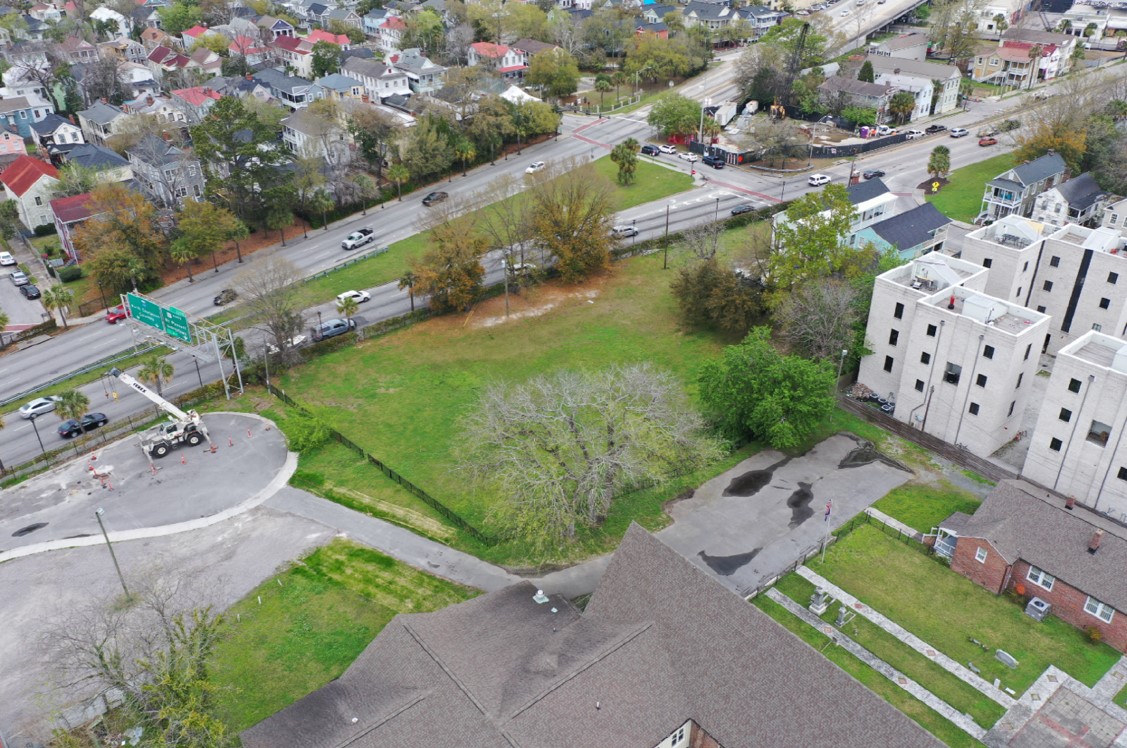 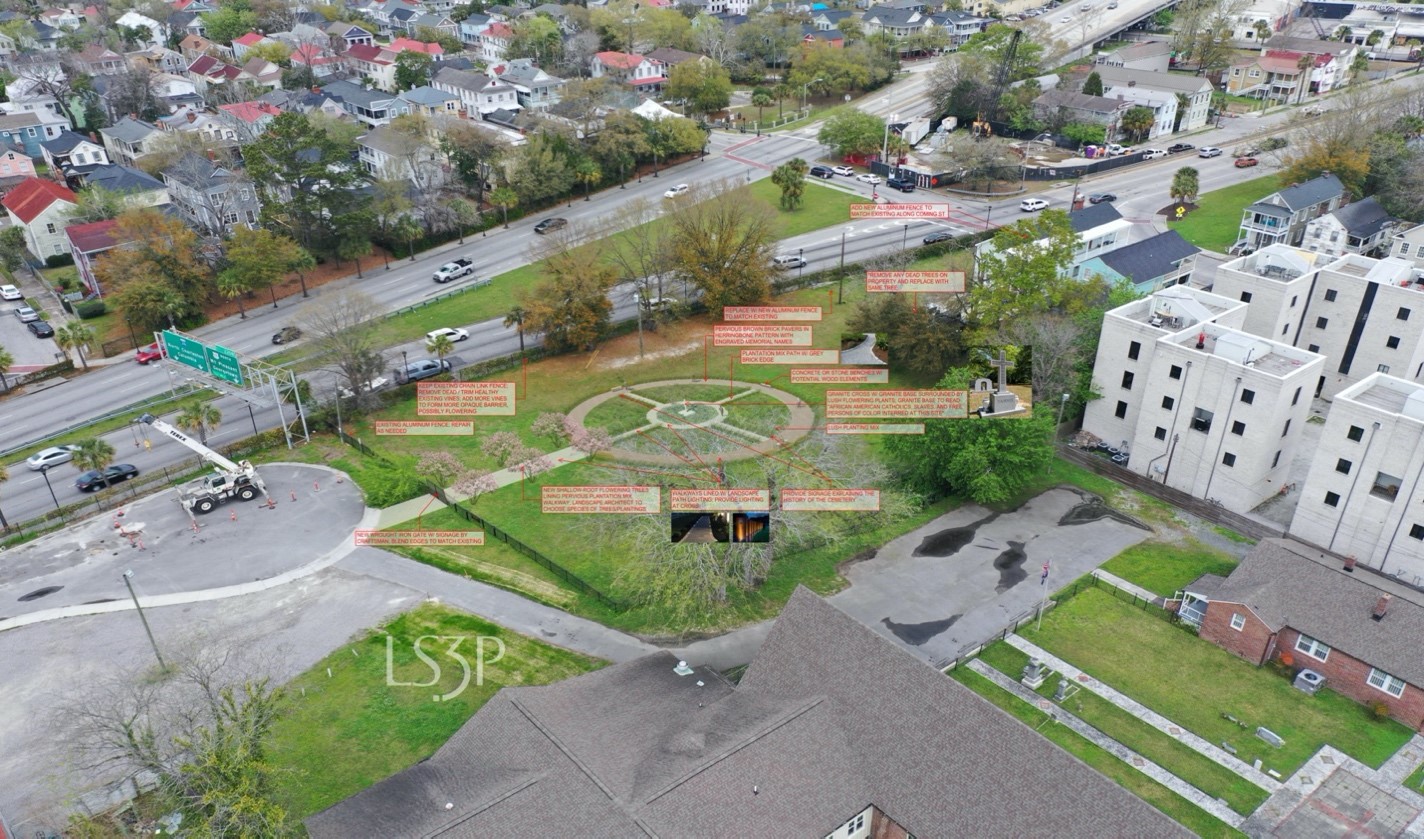
The first Bishop of Charleston, John England, reported in 1833 that roughly 1,200 enslaved people in Charleston were Catholic. In 1843, a representative of the Diocese of Charleston purchased a plot of land located near the Southeast corner of Coming Street and the Crosstown Highway for “use of the colored Roman Catholic population of the City of Charleston and Charleston Neck, as a cemetery or burial ground for the said Colored Slaves or free,” black people.* The diocese later used a portion of the cemetery property at the corner of Coming Street and Shepard Street, now the Crosstown, for the construction of Immaculate Conception Church which was dedicated in 1880. This wooden building was later converted to a school for African-American children. In 1923, the diocese used the western portion of the property along Shepard Street to build a new brick Immaculate Conception Church for African-American Catholics. The cemetery remained in use. While it was owned by the diocese, the unincorporated “Saint John Burial Association,” comprised of African-American church elders, maintained the property.
In 1967, the diocese closed what had been the two African-American churches in the previously Jim Crow-segregated Charleston—Immaculate Conception and Saint Peter, which was located on Wentworth Street. African-American parishioners were transferred to Saint Patrick Church.
A third historically African-American church, Our Lady of Mercy on America Street, was merged with Saint Patrick Church in 2014.
Also in 1967, the South Carolina Department of Transportation, which had taken by eminent domain a portion of the Immaculate Conception and Saint John property while eradicating the adjacent portion of Shepard Street, completed the Crosstown Highway. The school was closed and both buildings were damaged by fire and later razed. During the transfer of parishes to Saint Patrick Church, the cemetery death register for the period, including the burial of enslaved people (1843-1882), was lost.
For more than 20 years, the property remained vacant and unmarked. Grave stones were lost, destroyed, or removed. Its history forgotten or overlooked, the diocese sought to sell the property in the 1990’s. In 1994, a group of concerned African-Americans prompted a study conducted by the Chicora Foundation and initiated on behalf of the community by Calvary Episcopal Church. The study concluded that as many as 1,000 souls were possibly buried in the ground of this consecrated Catholic cemetery. The diocese suspended its efforts to sell the property. In recent years, at the request of Saint Patrick Church, the diocese assumed responsibility for the maintenance of the property. It then fenced in most of the land and posted a sign identifying it as a Catholic cemetery.
For anyone unfamiliar with its history, the cemetery property behind the fence was an unremarkable grass field that was often used as a dog park. For the souls interred therein, it is their final resting place—a place that connects our brief life in this fallen world with the hope of eternal union with Christ among the communion of saints.
The Saint John Cemetery Memorial Project
In the eyes of the foolish they seemed to have died, and their departure was thought to be an affliction, and their going from us to be their destruction; but they are at peace. For though in the sight of men they were punished, their hope is full of immortality. Having been disciplined a little, they will receive great good, because God tested them and found them worthy of himself. (WIS 3:2-5)
The lay Catholic community of Charleston shared a duty to make this final resting place of our departed Catholic brothers and sisters a holy place of remembrance and prayer.
* From passage quoting the Charleston County RMC Deed Book N11, page 130; referenced in “The St. John’s Burial Association and Catholic Cemetery at Immaculate Conception, City of Charleston, South Carolina: What Became of the Dead?” Tinkley, Michael; Hacker, Debi; Chicora Foundation Research, 1994.
SaintJohnCemetery.pdf
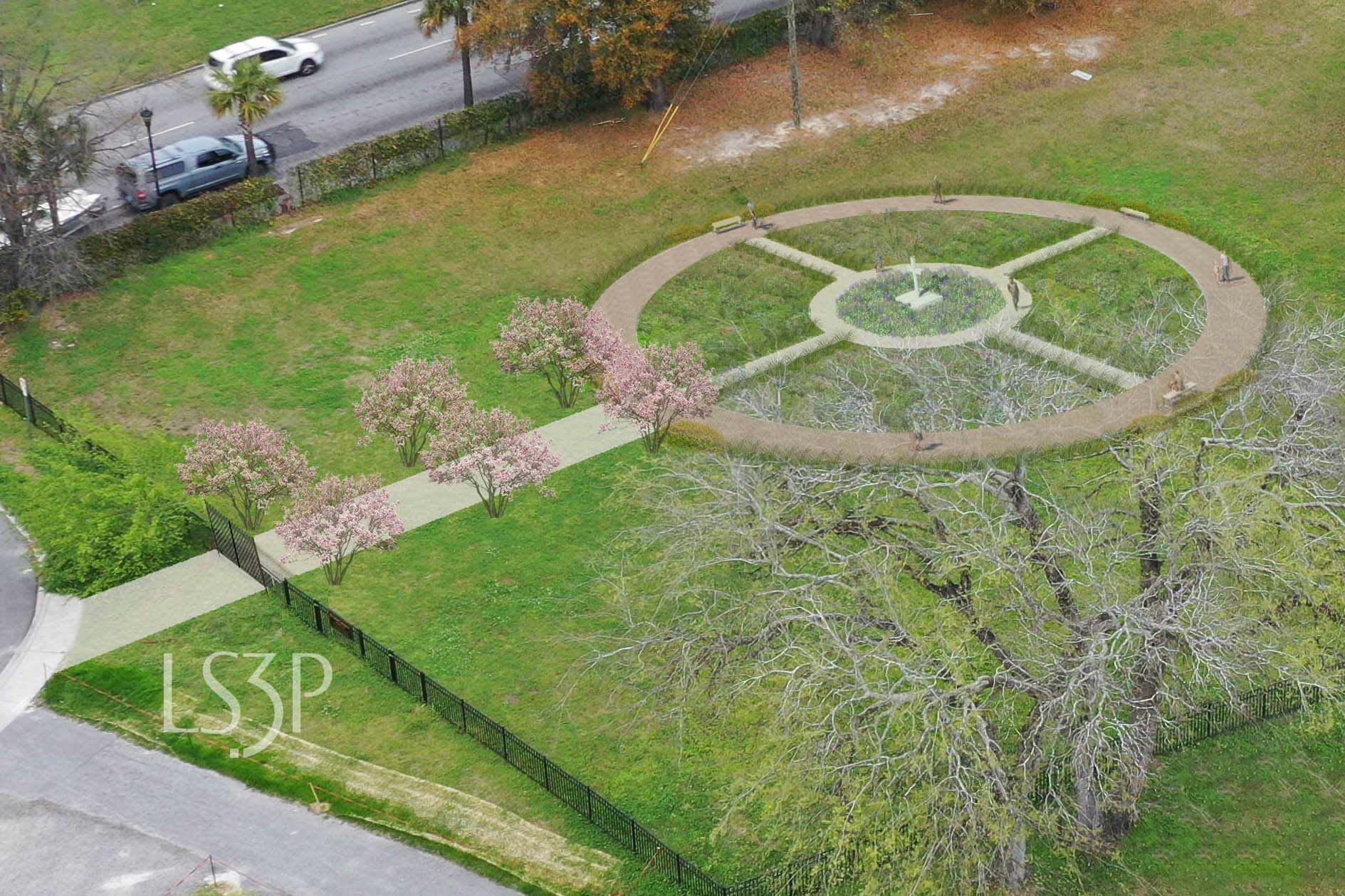 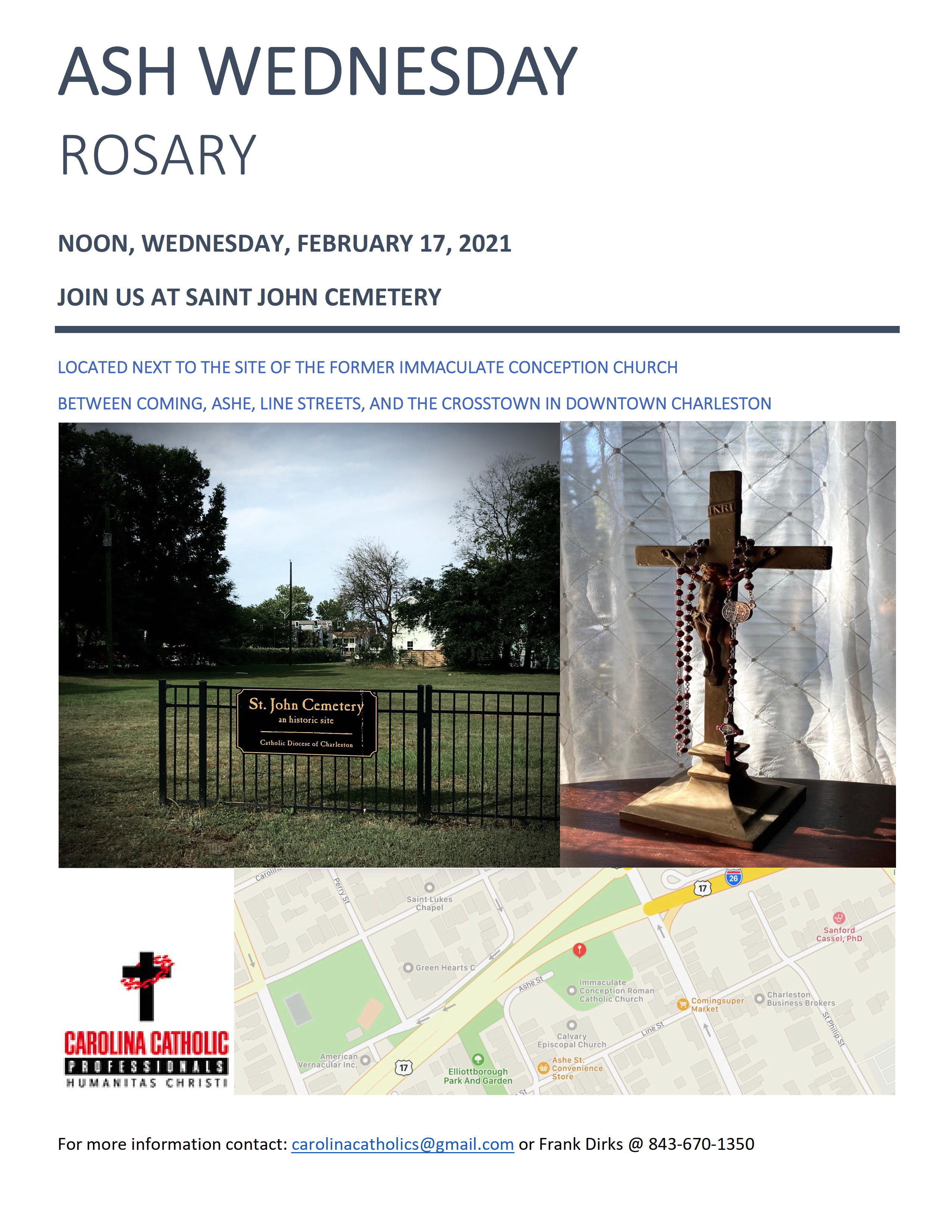
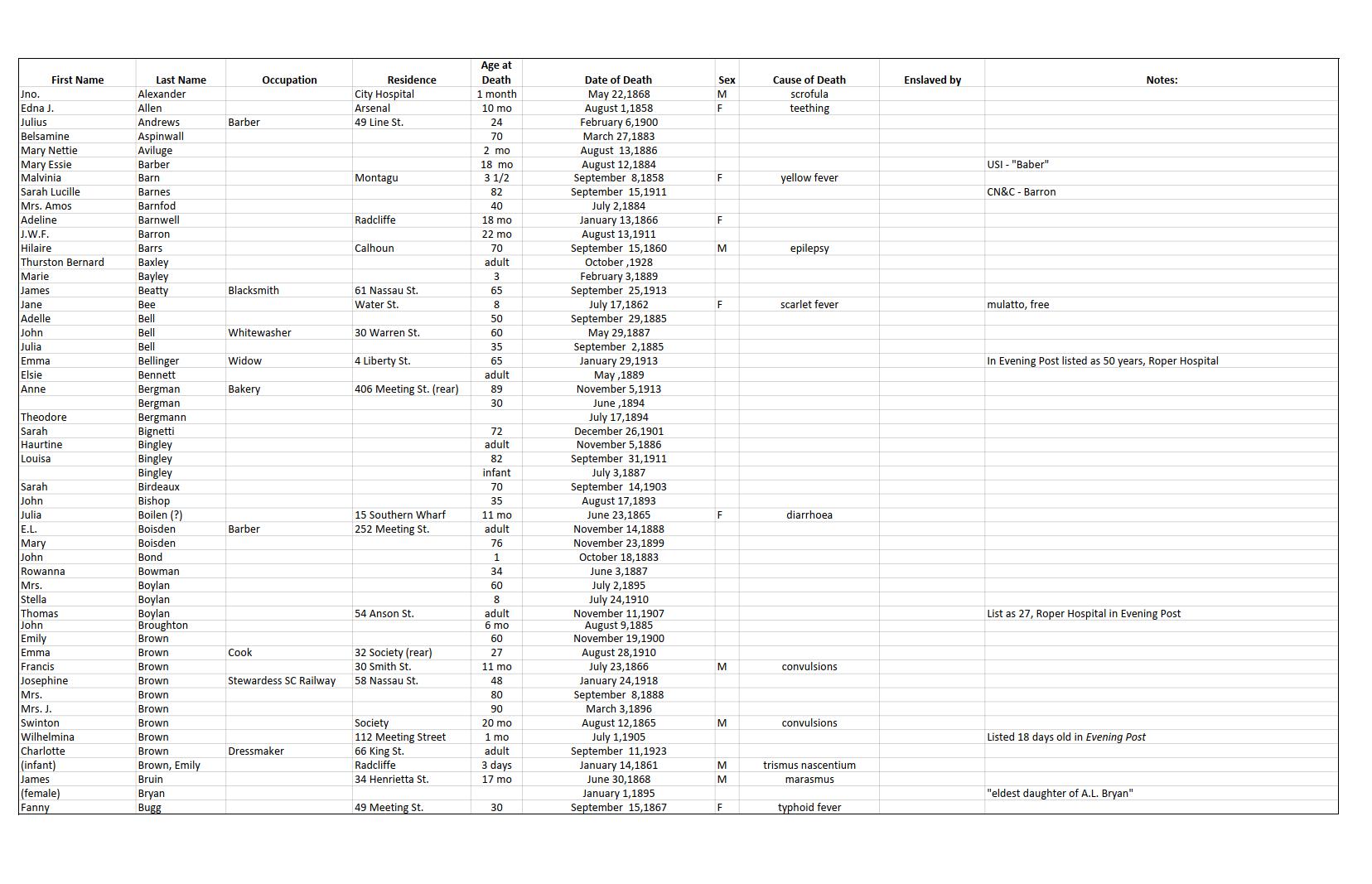
|
Voices from the Community
Recently,
Doris Hazel, a retired teacher and life-long Charlestonian, shared her
story of faith and family as an African-American Catholic growing up in
the Jim-Crow South. Ms. Hazel has been a leader in the effort to bring
attention and a proper memorial to the Saint John Cemetery.
| |
Voices from the Community A Lowcountry’s Religious Roots Getting Renewed Attention
A
vacant lot at the corner of Coming and Shepard Streets was nearly
forgotten until Frank Dirks became curious. It has been determined that
roughly 150 or more enslaved people are buried at St. John Cemetery. FOX
24 News Anchor Bill Burr conducted an exclusive interview with members
of Carolina Catholic Professionals regarding this hidden history.
|
History of Immaculate Conception Church beside the Cemetery
The first Immaculate Conception Church at the corner of Coming and Shepard Street was dedicated by Bishop Lynch in 1880 as a “mission church for colored Catholics.” In 1904, the sisters of Our Lady of Mercy converted it to a school and enlarged it with an addition on the back. In 1917, the Oblate Sisters of Divine Providence arrived in Charleston to take responsibility for the school. Four sisters taught 180 students. With no playground, students used the cemetery behind the building for play and recess. In 1928, a new Immaculate Conception School was opened on Coming Street.
The photo below left was taken during the 1930s. The photo below right was taken during the 1940s. (Diocese Archives)
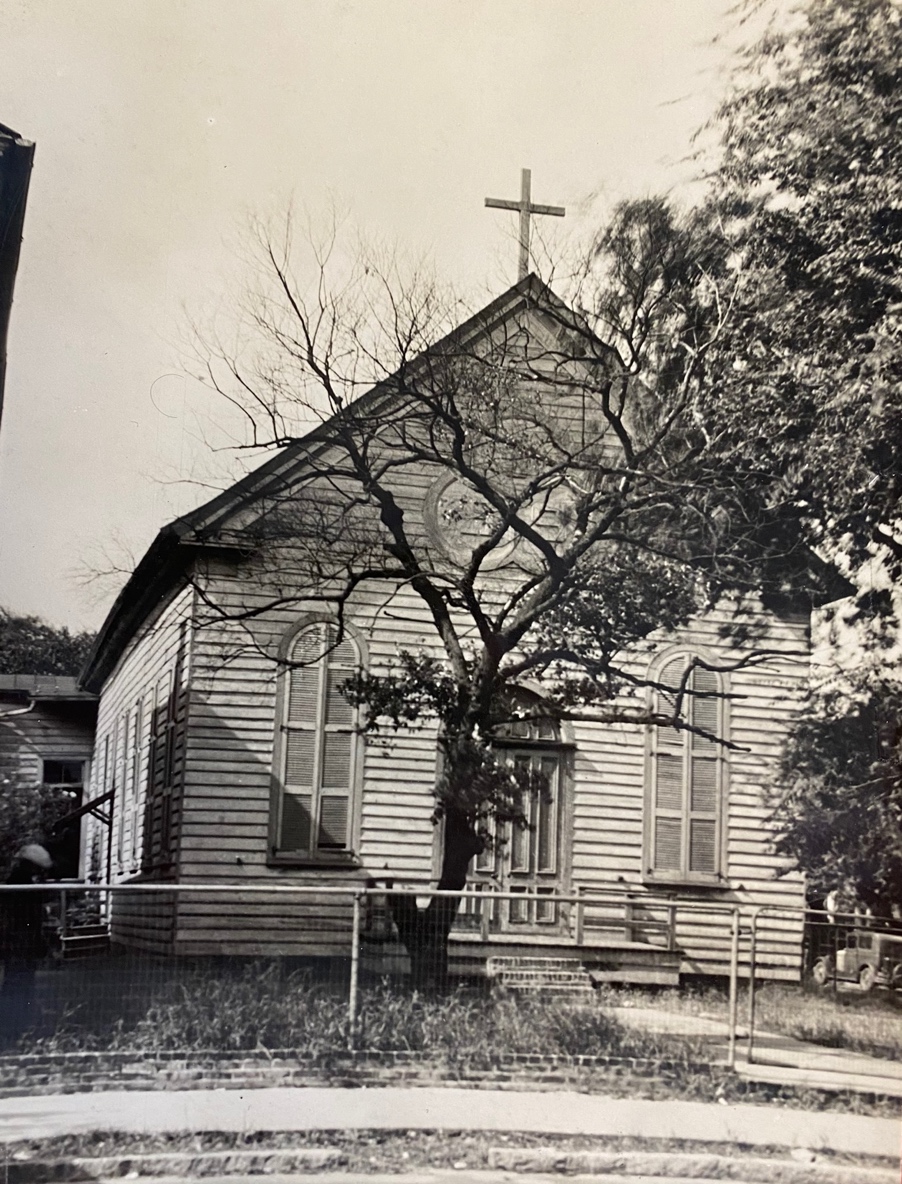
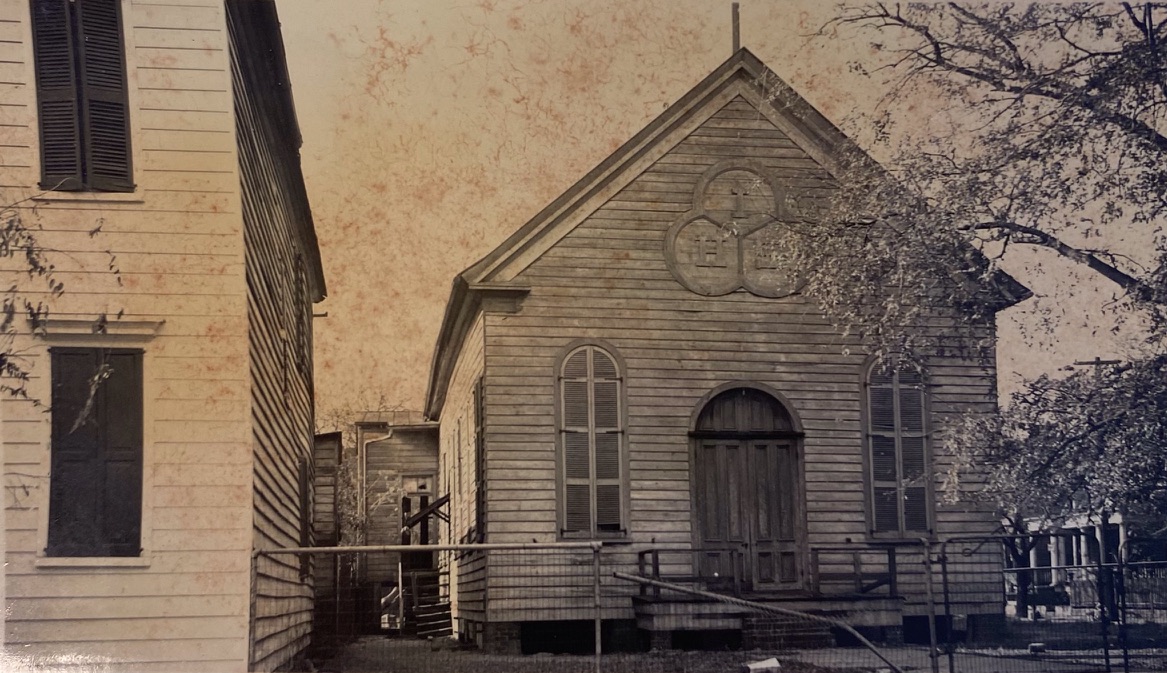
The building was torn down in the early 1950s.
In 1920, the Saint John Burial Association gave permission for Bishop Russell to build a church on a portion of the cemetery, “to be erected so as to not disturb the bodies interred thereunder.” In 1923 the building on 115 Shepard Street was completed but the bishop decided to use it initially for the school, which had exceeded the capacity of the wooden building. Bishop Walsh led the effort to build the new school on Coming Street and in 1928 dedicated the building as the new Immaculate Conception Church.
These photos were taken during the 1940s. (Diocese Archives)
 
In 1965, the Diocese sold a portion of the cemetery land to the state highway department for the Crosstown highway, which eliminated this stretch of Shepard Street. Soil sampling that was conducted for construction purposes was not intended to determine if the work would disturb graves.
In February 1967, the diocese invited the Reverend Harold Perry, the first openly African-American Catholic bishop, in celebration of the centennial of Saint Peter Church. In September of 1967, Bishop Unterkoefler announced the closure of Saint Peter Church and Immaculate Conception Church, consolidating the parishes into Saint Patrick Church.
In February 1974, a suspicious fire damaged a portion of the interior and the rear of the building. Later that year the building was demolished.
Save for the memories of families with members buried there, the cemetery was almost forgotten. In 1994, African-American parishioners of Saint Patrick church sought the support of the pastor of Calvary Protestant Episcopal Church to retain the Chicora Foundation to prepare a report on the history of the cemetery. That report prompted the Diocese to erect a fence and sign designating the land as an historic cemetery.
The photos below were taken in 1970. (Diocese Archives)
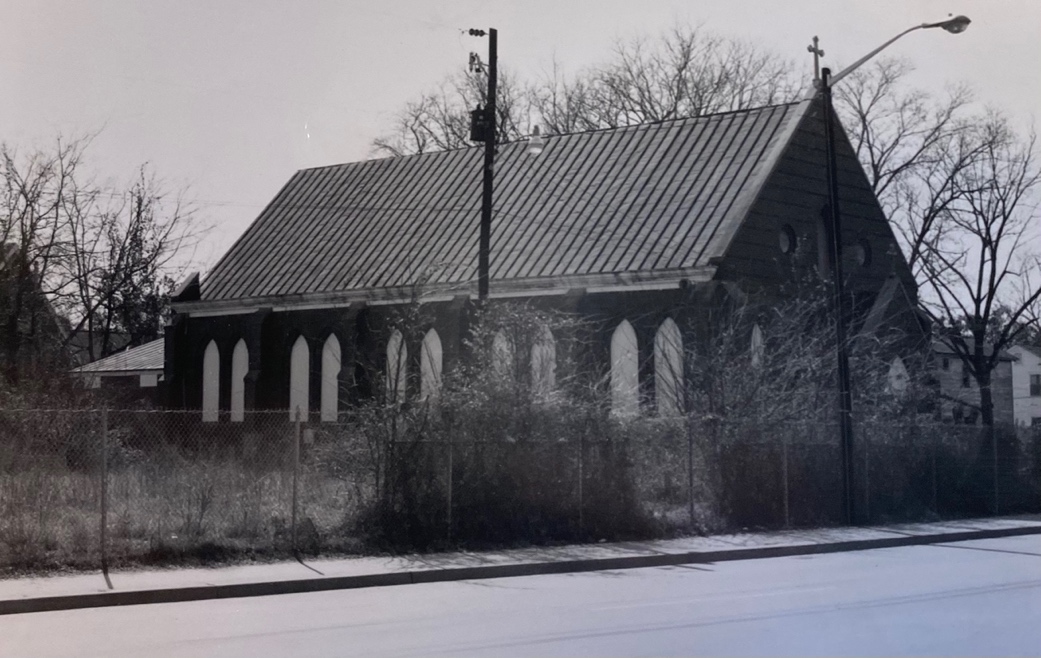 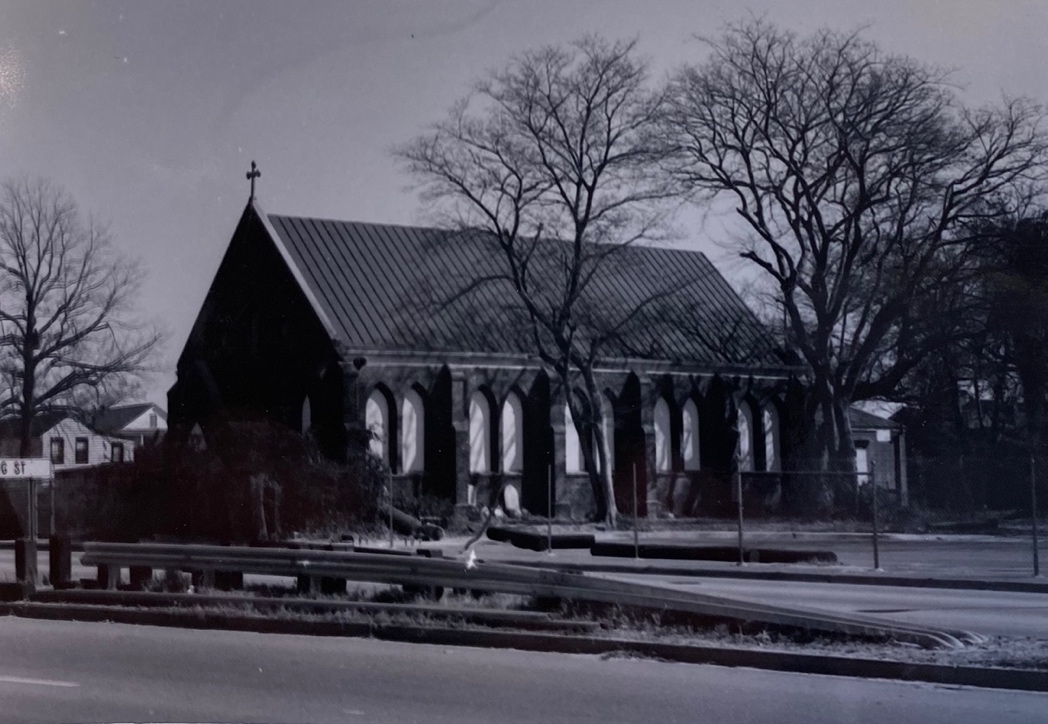
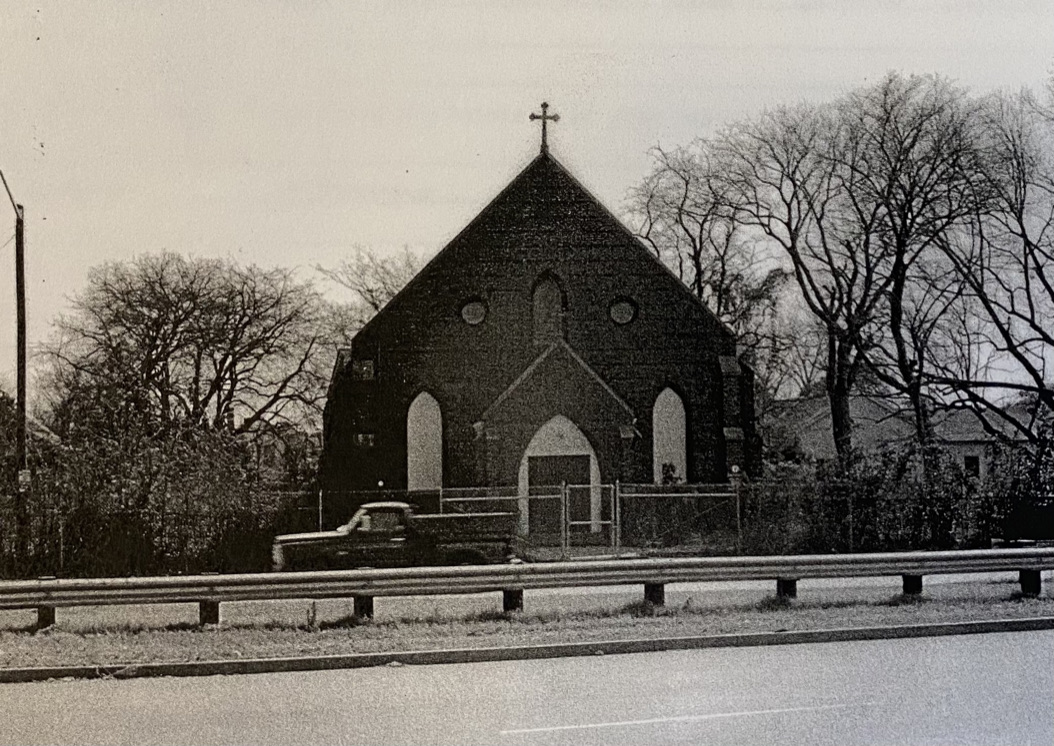
How did we remember and honor the faith of the souls of Saint John Cemetery?
Consider it all joy… when you encounter various trials, for you know that testing of your faith produces perseverance. And let perseverance be perfect, so that you may be perfect and complete, lacking in nothing.
The brother in lowly circumstances should take pride in his high standing.
James 1:2-4 & 9
On Tuesday, January 14th 1868, African-American Catholics of Saint Peter Church met to prepare a statement of thanks to the Bishop of Charleston, the Reverend Patrick Lynch, for his efforts in preparing, “in the face of many difficulties, a building in which we may worship God according to the teachings of our Holy Faith.” They go on to say, “that we will try now to do as much for ourselves as has been done for us by (Bishop Lynch). Some help we may need, and if so, we feel that we can ask it from the Catholics of Charleston who know and trust us. They will not refuse their aid, and we will not ask it unless we are compelled.”
Twenty years later, on April 21st, 1888, the Bishop of Charleston, the Reverend Henry Pinckney Northrop issued a circular in which he directed white Catholics in Charleston to refrain from attending services or receiving the Sacraments at Saint Peter Church, “for colored people.” The Bishop’s circular concluded that, “this arrangement will ensure special attention to the colored people, for whose spiritual welfare the Bishop and priests of the diocese are sincerely and ardently desirous.”
On the same day the lay leaders of the Saint Peter Church congregation drafted a response to the bishop’s circular raising questions, “in order that we may know something of our future position and obligations in the Church to which we are firmly united.” Among the questions:
“Are we the Colored Catholics of the City to be excluded from attending divine services at other Catholic Churches, or will we be protected and welcomed should we present ourselves at the other Churches for the purpose of complying with the precepts of the Church?”
The archives do not contain a record of Bishop Northrup’s response.
Of the nineteen signatories to this letter to the bishop, eight are confirmed to be buried at Saint John Cemetery: E.L. Boisdon, a barber; H.P. Carroll, a policeman; O.F. Castion, a lunch-stand operator; A.J Castion, a poultry dealer; J. P. Guenveur, a carpenter; C.D. Hayne; W.H. Logan; and J. F. Peronneau, a cotton sampler.
|
Bringing FM Catholic Radio to Bishop England High School
Bishop England High School (BEHS) had a unique opportunity to establish its own Low Power FM radio station. Relying on technical assistance from Catholic Radio in South Carolina, BEHS is now the license holder and Catholic Radio in South Carolina provides tailored programming for BEHS and the Charleston community. With a broadcast antenna and transmitter maintained by Catholic Radio in South Carolina, FM Catholic Radio at BEHS has clear radio signal coverage encompassing most of metro Charleston.
Once in place, Catholic Radio in South Carolina will provide ongoing technical support to enable the BEHS-FM station to develop its own radio programming. These programs may include student-produced shows, musical performances, and sporting events. BEHS-FM will become a cultural complement and media resource for sustaining and promoting the Catholic community of Charleston.
Catholic Radio in South Carolina: Catholic Radio in South Carolina, Mediatrix, SC, Inc. has grown in response to Pope John Paul II’s call for a “New Evangelization.” In 2003 a group of faithful lay Catholics established Mediatrix SC, Inc., a 501(c)(3) not-for-profit corporation. Mediatrix currently broadcasts Catholic content on WLTQ 730-AM in Charleston and WCKI 1300-AM in Greer/Greenville. With the permission of Bishop Robert Guglielmone, in 2013, Catholic Radio in South Carolina began assisting Catholic schools across the state in establishing school-based Low Power FM stations. Currently, seven Low Power FM stations are in operation.
You Can Help: We are asking friends of Bishop England, families, alumni, and Catholics across Charleston to join us in keeping FM radio at BEHS. We are currently seeking pledges for this project. If you are able to provide support for this project, please e-mail Frank Dirks or use our donation page.
Turn your the radio dial to…
- Listen to stories of faith produced by BEHS students and featuring students and alumni
- Listen to musical performances by BEHS students
- Listen to lessons of faith offered by the clergy and religious in Charleston
This Catholic community radio resource is as vibrant as the place it calls home. Help keep FM Catholic Radio to Bishop England!
|
It is time for each of us to support Catholic Radio in South Carolina
If you are a believer in Christ, you know that the world is in desperate need of the His Holy Word. Today, there is no greater media source for Christian evangelization
than Catholic Radio, which presents the Gospel and offers apologetics
24/7 over the airwaves. Carolina Catholic Professionals is helping to build the capacity of Catholic Radio in South Carolina.
The
Lowcountry is blessed to have three Catholic Radio stations, 730 AM,
106.7 FM, and a new station, WBEI 102.9 FM, licensed to Bishop England
High School. While the two FM stations are low-power, 730 AM is the
5,000-watt broadcasting anchor for Catholic Radio in the Lowcountry.
Catholic Radio in South Carolina depends on the generous support
of faithful souls in our community. PLEASE, help Catholic Radio feed
souls hungering for the truth, beauty, and love of Jesus Christ. Give
now! Ask our Lord to guide you. Help us bring His Holy Word to souls
in need. Please, support Catholic Radio!
https://catholicradioinsc.com/donations/
|
Gentrification in Our Community: A Faith Community Response Report and Action Plan
Overview: In response to changes in our community related to the process of gentrification, three faith-based organizations hosted community meetings open to the public for the purpose of gathering information from residents. The meetings were held on Tuesday, 24 April at Our Lady of Mercy-Neighborhood House; Sunday, 29 April at Saint Patrick’s Church; and Wednesday, 2 May at Trinity Worldwide Outreach Ministries. We asked participants to complete surveys and participate in group discussions during which we took notes. More than 60 people attended the meetings and 47 people completed surveys.
Read the latest Report and Action Plan (PDF).
|
The Case for a Permanent Catholic Campus Ministry Location at the College of Charleston
The Need
The college years are often seen and feared by parents and the public as a time during which the secular world erodes the Christian faith of students. In fact, Mass attendance is declining among all age groups. Yet longitudinal studies of young Catholics have found that eight out of ten students enter college with the spiritual desire to deepen their faith.
Perhaps more than previous generations, studies find that today’s college students resist structure. They seek a comfortable safe place, a home, among peers. As is well known, the current college generation is more bound than any prior to electronic devices linked to digital communities and social networks. They have grown up in homes gathered in living rooms with each family member intently involved with their personal devices. The paradox of communal isolation is a hallmark. Other interfaith studies have found that students with spiritual longing gain the most from shared experiences with peers through study, service, and one-on-one peer interaction.
Many traditional structures and processes of Catholic youth outreach are often not aligned with the needs of today’s college students. However, the longstanding Newman Center model stands out because it offers the home and faith community environment that students want and need. The key elements of the Newman Model include a permanent gathering place that is comfortably like home, large enough space for gatherings of forty or more people, close proximity to the college campus and a Catholic Church; and a kitchen available for large meals and off-hour and late-night snacks. In short, it is a loving Catholic family home away from home.
This conceptual and empirical depiction of what a Catholic campus ministry center should be is affirmed by the testimony of the former and current students involved in Campus Ministry at the College of Charleston. In what had been the temporary center called the Upper Room, one former student said that you would regularly find ten to fifteen students gathered in this “comfortable and safe space” to study at any time of the day or night. Because upperclassmen would naturally become peer mentors for underclassmen, students with demanding class and study schedules would retreat to the Upper Room for peaceful fellowship and quiet study rather than the library. According to the students, these one-on-one relationships were vital to deepening the students’ faith because they saw their peers living as quiet witnesses to the Gospel. As one said, “You become more like the people you spend time with.”
The students who spent their days in the Upper Room also regularly attended Mass at Saint Patrick’s, inviting Catholics and non-Catholics alike. Many non-Catholic friends became regular Mass attendees. The students who shared their experiences came from homes that were both very and not very devout. Yet they all found that their experience in campus ministry through the Upper Room deepened their faith and made them truer followers of Christ.
Today, Campus Ministry is without a home. Saint Patrick’s Parish continues to offer a student Mass and provides meeting space for a weekly community meal. Yet the program is without ongoing meeting space. With deep concern for the spiritual well-being of young people at the College of Charleston and interest in ensuring that the ministry finds appropriate permanent space to renew the program and feed the spiritual hunger of young people for the Truth found only in Christ, a group of lay Catholics have joined to provide support for the ministry and work with the parish and diocese to find an acceptable permanent solution.
Be demanding of the world around you; be demanding first of all with yourselves. Be children of God; take pride in it! Pope Saint John Paul II, World Youth Day, Czestochowa, Poland
The Solution
The “Newman Center” model continues to be the most effective and distinctive approach to Catholic college ministry on large and mid-size campuses. This model stands out because it offers the home and faith community environments that students want and need.
The key elements of the Newman Model dedicated center include:
- Close proximity both to the college campus within well lit, safe walking distance for late night travel (St. Patrick’s Catholic Church, our parish home away from home parish, could not be better located)
- Permanent gathering place that is comfortably like home – dedicated only for campus ministry use
- Large enough “living room” space for gatherings of forty or more people (e.g., movie nights, speakers, discussions, etc.)
- Two bathrooms – handicap accessible
- Main entrance and at least ground floor handicap accessible
- Kitchen available for prep of large meals and off-hour and late-night snacks
- Study rooms adequate for private and small group study
- Private ministry office for both workstation and pastoral counseling
- Multiple electric circuits, outlets, and charging stations for the “wired” generation
- A small quiet meditation prayer room
- Total space requirement of about 3,000 – 4,000 square feet
Read this Case Statement (PDF).
|
|












